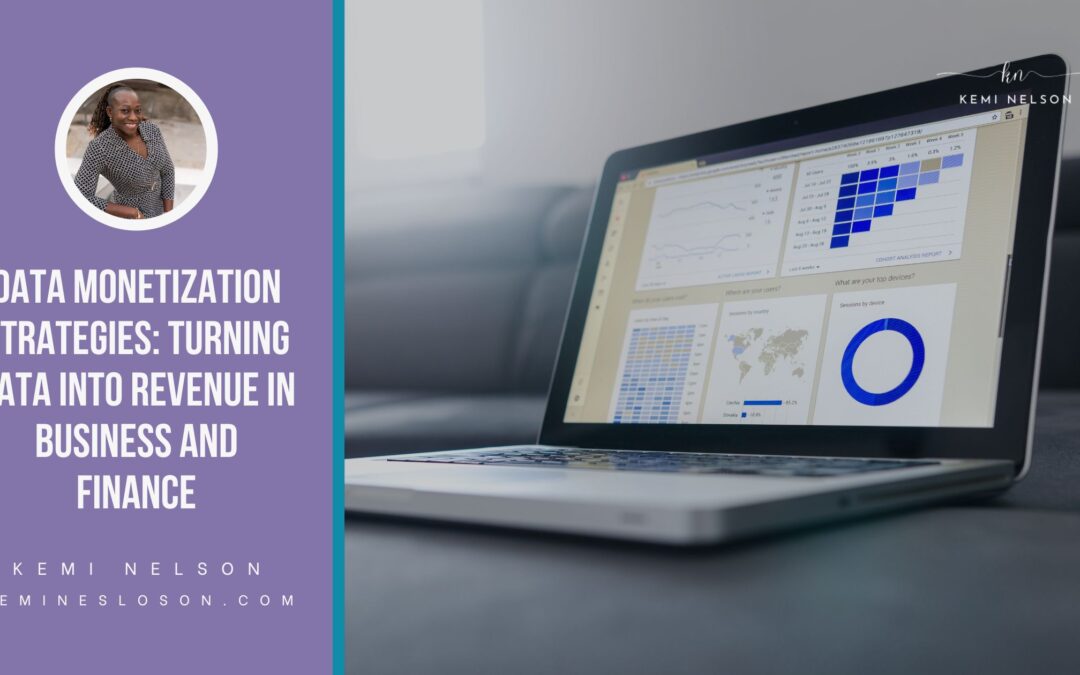What is Data Monetization?
Data monetization is the process of leveraging data directly to generate economic value. Whether gathering insights from big data to improve business performance or selling those insights to third parties, a vital piece is that the data is beneficial, meaning it is unique, and the purchaser can use it to take action for desired impact.
What Should You Know?
Keen analysis can help you convert the results of big data into monetary value.
It is necessary to make the distinction between value creation and value realization. When you create value from data, you use it to direct processes or provide a service. That may mean improving processes, optimizing time to market, or making a business team more productive. The date you provide may improve employee or customer satisfaction. It is common for companies to create value through data analysis. However, only some successfully monetize the data to realize its full value in a way that is measurable to the bottom line.
Value creation can be defined as the effort that creates a measurable benefit, while value realization is the quantifiable benefit that stakeholders see. Improving efficiency in a department benefits a few people, whereas data-driven improvements that contribute to company margin typically positively impacts many stakeholders.
Types of Data Monetization
This strategy is the simplest and generally works by direct business-to-customer (B2C). There are several ways to access and disseminate data with this strategy:
- Raw and unstructured data
- Aggregated data for an overview
- Anonymized data with personally identifiable information (PII)
If the data is not analyzed prior to its sale, it will generate some revenue, although at its lowest revenue-generating pricing. Buyers will typically realize value only after the data is loaded and analyzed, often via BI software.
The seller summarizes analytical insights, such as customer behaviors or competitor trends. The insight is generated from internal datasets and external primary and secondary data sources.
These insights can be sold as a one-off report or by subscription using analytic applications. More work is required to generate insights and visualizations for companies using data monetization in this context. The risk here is that buyer requirements must be considered, and partial insights may generate little to no revenue.
Similar to Insight-as-a-Service, customers can access data insights in return for payment. The difference is that customers can have controlled access to the data provider’s analytics and BI visualization tools with no setup or maintenance for the buyer. Ownership remains with the provider.
Analytics-as-a-Service offers the most significant potential for revenue generation and has the greatest burden for the vendor. This model requires well-thought cybersecurity policies.
This model leverages every available data source in the hope of efficiency and productivity. It is an indirect data monetization method that benefits the company by analyzing its data. Centralizing and analyzing dumped data (also known as data exhaust) can identify repeating network problems and improve productivity. Analysis of sales metrics will identify sales volumes over time, improve the supply chain, and optimize stock.
Steps to Monetize Your Data
Before you start, Define your market and create a business plan to service that market.
One big step would be converting your organization to a data-driven culture. This will allow you to work toward better bottom-line results using the data you already have
- Discover your data: define your assets and determine their monetization potential.
- Capture your data: create clear business rules for gathering and scrubbing the data.
- Storing your data: Improving your data warehouse systems will be vital.
- Data integration: It is critical to match data with internal business processes and align to current state of the business.
- Analyze the Data: This is best done using readily available automated business intelligence tools that allow users to track, analyze, and report on key performance indicators and other metrics.
- Disseminate the information. Data is useless if it cannot result in something shared for purpose.
It is necessary to determine the role of data and discover its value in the market. The current infrastructure may need to be improved to support storage, processing, and security. Building for, rather than around data monetization requirements, is paramount to success.
Creating a platform without considering the data buyer can lead to lower sales. More companies are monetizing their data and driving up revenue. By doing so, they can increase productivity or reduce expenses, leading to a better bottom line.

